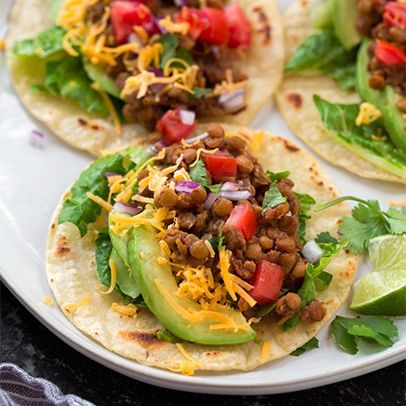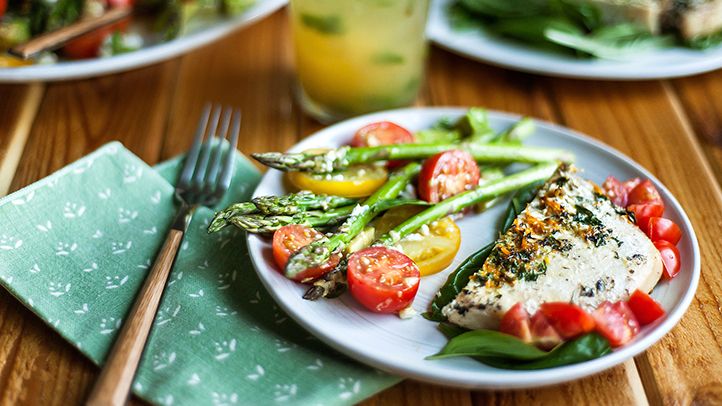Introduction:
Recipes For Diabetics Type 2 involves making mindful choices about what to eat. The right foods can help regulate blood sugar levels, improve overall health, and even enhance the enjoyment of meals. Here are some nutritious and flavorful recipes tailored for individuals with type 2 diabetes, focusing on balanced macronutrients, low glycemic index ingredients, and heart-healthy fats.
1.Quinoa and Black Bean Salad
Ingredients:
1 cup quinoa, rinsed
2 cups water
1 can (15 oz) black beans, rinsed and drained
1 red bell pepper, diced
1 small red onion, finely chopped
1 avocado, diced
1/4 cup fresh cilantro, chopped
1/4 cup lime juice
1 tablespoon olive oil
1 teaspoon ground cumin
Salt and pepper to taste
Instructions:
In a medium saucepan, bring water to a boil. Add quinoa, reduce heat, cover, and simmer for 15 minutes, or until water is absorbed and quinoa is fluffy. Let it cool.
In a large bowl, combine black beans, red bell pepper, onion, avocado, and cilantro.
Serve chilled or at room temperature. This salad is rich in fiber, healthy fats, and plant-based protein, making it a great choice for stabilizing blood sugar.
2.Baked Salmon with Asparagus
Ingredients:
4 salmon fillets (about 4 oz each)
1 bunch asparagus, trimmed
2 tablespoons olive oil
2 cloves garlic, minced
1 lemon, sliced
1 teaspoon dried dill
Salt and pepper to taste
Instructions:
Preheat the oven to 400°F (200°C). Line a baking sheet with parchment paper.
Arrange salmon fillets and asparagus on the baking sheet. Drizzle with olive oil and sprinkle with garlic, dill, salt, and pepper.
Place lemon slices over the salmon fillets.
Serve with a side of whole-grain brown rice or quinoa for a balanced meal. Salmon is rich in omega-3 fatty acids, which are beneficial for heart health, while asparagus provides fiber and essential vitamins.
3.Greek Yogurt Parfait with Berries
Ingredients:
1 cup plain Greek yogurt (choose a variety with no added sugars)
1/2 cup mixed berries (blueberries, strawberries, raspberries)
2 tablespoons chopped nuts (almonds, walnuts, or pecans)
1 tablespoon chia seeds
1 teaspoon cinnamon
A drizzle of sugar-free sweetener or honey (optional)
Instructions:
In a serving glass or bowl, layer Greek yogurt, mixed berries, nuts, and chia seeds.
Sprinkle with cinnamon and drizzle with a sugar-free sweetener or honey if desired.
Enjoy immediately or refrigerate for later.
This parfait is a great option for breakfast or a snack. Greek yogurt provides protein and probiotics, while berries offer antioxidants and fiber, making it a satisfying and blood sugar-friendly choice.
4.Stir-Fried Tofu with Vegetables
Ingredients:
1 block (14 oz) firm tofu, drained and cubed
2 tablespoons soy sauce (low sodium)
1 tablespoon sesame oil
2 cloves garlic, minced
1 inch ginger, minced
1 red bell pepper, sliced
1 cup broccoli florets
1 carrot, julienned
2 green onions, chopped
1 tablespoon sesame seeds (optional)
Brown rice or cauliflower rice for serving
Instructions:
Remove from pan and set aside.
In the same pan, add garlic and ginger, sautéing until fragrant.
Add bell pepper, broccoli, and carrot. Stir-fry for 5-7 minutes or until vegetables are tender-crisp.
Return tofu to the pan, add soy sauce, and stir well to coat. Cook for an additional 2-3 minutes.
Sprinkle with green onions and sesame seeds before serving. Pair with brown rice or cauliflower rice for a low-carb option.
Tofu is an excellent source of plant-based protein, and the colorful vegetables add fiber and essential nutrients without spiking blood sugar levels.
5.Spiced Lentil Soup
Ingredients:
1 cup dried lentils, rinsed
1 onion, diced
2 carrots, diced
2 celery stalks, diced
3 cloves garlic, minced
1 teaspoon ground cumin
1/2 teaspoon ground turmeric
1/2 teaspoon paprika
1/4 teaspoon cayenne pepper (optional)
4 cups vegetable broth (low sodium)
1 can (14.5 oz) diced tomatoes (no salt added)
1 bay leaf
Fresh parsley for garnish
Salt and pepper to taste
Instructions:
In a large pot, sauté onion, carrots, and celery until softened.
Add garlic and spices, stirring for 1-2 minutes until fragrant.
Pour in the vegetable broth, diced tomatoes, lentils, and bay leaf. Bring to a boil.
Reduce heat and simmer for 25-30 minutes, or until lentils are tender.
Season with salt and pepper. Remove bay leaf and garnish with fresh parsley before serving.
Lentils are a low-glycemic legume that provides fiber and protein, making this soup a hearty and diabetes-friendly meal option.
Conclusion
Eating with type 2 diabetes doesn’t mean giving up on flavor or enjoyment. By focusing on whole, unprocessed foods, incorporating lean proteins, healthy fats, and fiber-rich vegetables, and being mindful of portion sizes, you can create satisfying meals that support your health goals. These recipes offer a balance of nutrients that help manage blood sugar levels while delivering delicious flavors that anyone can enjoy.

How do diabetics prepare food?
For individuals with diabetes, particularly type 2 diabetes, preparing food involves a thoughtful approach to selecting ingredients, cooking methods, and portion control. The goal is to manage blood sugar levels while enjoying a diverse and satisfying diet. Here’s a guide on how diabetics can prepare food that is both healthy and delicious.
Choosing the Right Ingredients
Focus on Low-Glycemic Index Foods:
Diabetics should prioritize low-GI foods, which have a slower impact on blood sugar. These include whole grains like quinoa, brown rice, and oats; legumes like beans and lentils; non-starchy vegetables like spinach, broccoli, and bell peppers; and most fruits, especially berries, apples, and pears.
1.Incorporate Lean Proteins:
Protein has a minimal impact on blood sugar levels and helps in feeling full longer. Diabetics should include lean protein sources such as skinless poultry, fish, tofu, legumes, eggs, and low-fat dairy products. These foods help stabilize blood sugar and support muscle maintenance.
1.Opt for Healthy Fats:
Healthy fats, such as those found in olive oil, avocados, nuts, and seeds, are essential for heart health and can also help in controlling blood sugar. These fats should be used in moderation and in place of saturated and trans fats, which can increase the risk of heart disease.
1.Limit Processed Foods and Sugars:
Processed foods, particularly those high in refined sugars and unhealthy fats, can cause blood sugar spikes and contribute to weight gain. Diabetics should focus on whole, unprocessed foods and minimize their intake of sugary snacks, sweetened beverages, and processed meats.
Portion Control and Meal Planning
Balanced Plates:
A diabetic-friendly plate should be well-balanced, with half of it filled with non-starchy vegetables, a quarter with lean protein, and the remaining quarter with whole grains or starchy vegetables. This balance helps in managing carbohydrate intake and ensures a variety of nutrients.
1.Consistent Meal Timing:
Eating at regular intervals helps in maintaining stable blood sugar levels. Diabetics should aim for three balanced meals and one or two healthy snacks per day, avoiding long gaps between meals.
1.Controlled Portions:
Portion control is crucial for managing blood sugar levels and preventing overeating. Using smaller plates, measuring portions, and being mindful of serving sizes can help diabetics avoid excessive calorie and carbohydrate intake.
Cooking Techniques for Diabetics
Grilling, Baking, and Steaming:
These cooking methods preserve nutrients and flavor without adding excessive fat or calories. Grilling and baking are ideal for meats, fish, and vegetables, while steaming is excellent for retaining the vitamins in vegetables. Avoid deep-frying or pan-frying, which can add unhealthy fats.
1.Using Herbs and Spices:
Flavoring food with herbs and spices instead of salt or sugar is a great way to enhance taste while managing blood pressure and blood sugar levels. Fresh herbs like basil, cilantro, and parsley, and spices like turmeric, cumin, and cinnamon, not only add flavor but also offer health benefits.
1.Homemade Dressings and Sauces:
Store-bought dressings and sauces often contain added sugars, sodium, and unhealthy fats. Diabetics can prepare their own dressings using ingredients like olive oil, vinegar, lemon juice, and herbs, or make sauces with fresh tomatoes, garlic, and spices.
1.Smart Substitutions:
Simple ingredient swaps can make meals healthier for diabetics. For example, use whole-grain pasta instead of regular pasta, cauliflower rice instead of white rice, and Greek yogurt instead of sour cream. These substitutions lower the glycemic load and provide more nutrients.
Meal Prep and Batch Cooking
Planning Ahead:
Meal prepping is an effective way for diabetics to ensure they have healthy, portion-controlled meals ready throughout the week. Preparing meals in advance helps in avoiding unhealthy takeout options and ensures consistency in carbohydrate intake.
Batch Cooking:
Cooking in large quantities and storing portions in the freezer is convenient for those with busy schedules. Soups, stews, and casseroles made with low-GI ingredients can be portioned out and reheated for quick, nutritious meals.

Mindful Snacking:
Diabetics should have healthy snacks on hand to prevent blood sugar dips between meals. Options like raw vegetables with hummus, a handful of nuts, or a small portion of Greek yogurt with berries are nutritious and satisfying.
Monitoring and Adjusting
Regular Blood Sugar Testing:
Monitoring blood sugar levels before and after meals helps diabetics understand how different foods affect their bodies. This information is crucial for adjusting meal plans and making informed dietary choices.
Consulting a Dietitian:
Working with a registered dietitian can help diabetics create personalized meal plans that align with their health goals and lifestyle. A dietitian can also provide guidance on portion sizes, food combinations, and how to incorporate favorite foods in a diabetes-friendly way.
Conclusion
Preparing food as a diabetic involves more than just selecting the right ingredients—it’s about creating balanced meals, using healthy cooking methods, and being mindful of portion sizes. By focusing on whole foods, healthy fats, lean proteins, and low-GI carbohydrates, diabetics can enjoy flavorful meals that support blood sugar control and overall well-being. With a little planning and creativity, managing diabetes through diet can be both effective and enjoyable.
What is the best way to cook meat for diabetics?
Recipes For Diabetics Type 2 For individuals with diabetes, cooking meat in a way that supports blood sugar management and overall health is crucial. Meat is a valuable source of protein, essential vitamins, and minerals, but the cooking method can significantly impact its nutritional profile. The best approaches emphasize low-fat, low-sodium, and nutrient-preserving techniques. Here’s a guide to the most diabetes-friendly ways to cook meat.
1.Grilling
Benefits:
Grilling is a popular method that enhances the natural flavors of meat without requiring added fats or oils. It allows excess fat to drip away from the meat, reducing its overall fat content. Additionally, grilling at high heat can create a delicious, caramelized crust, adding depth to the flavor without the need for sugary marinades or sauces.
Tips for Diabetics:
Use lean cuts of meat, such as chicken breast, turkey, pork tenderloin, or fish.
Avoid charring the meat, as this can produce harmful compounds. Cook over moderate heat and flip frequently.
Marinade the meat in heart-healthy ingredients like olive oil, lemon juice, garlic, and herbs to enhance flavor without added sugar.
2.Baking
Benefits:
Baking is an excellent method for retaining the moisture and nutrients in meat while using little or no added fat. It’s a versatile cooking method that works well for poultry, fish, and lean cuts of beef or pork. Baking allows you to cook large portions at once, making it ideal for meal prepping.
Tips for Diabetics:
Season the meat with spices and herbs instead of salt to keep sodium levels low.
Use a rack to elevate the meat in the baking dish, allowing fat to drip away.
Pair baked meats with non-starchy vegetables like broccoli, Brussels sprouts, or carrots for a balanced meal.
3.Steaming
Benefits:
Steaming is one of the healthiest ways to cook meat, as it preserves the moisture and nutrients without adding any fat. This gentle cooking method is particularly beneficial for delicate proteins like fish and chicken, which can easily become dry with other methods.
Tips for Diabetics:
Use a steamer basket to keep the meat above the water, preventing it from becoming waterlogged.
Season the meat with fresh herbs, ginger, garlic, or a squeeze of lemon juice before steaming to infuse flavor.
Serve steamed meat over a bed of leafy greens or with a side of whole grains like quinoa or brown rice for a well-rounded meal.
4.Slow Cooking
Benefits:
Slow cooking allows meat to cook at low temperatures over an extended period, making it tender and flavorful. This method is ideal for tougher cuts of meat that benefit from long, slow cooking, such as beef chuck, lamb shanks, or pork shoulder. Slow cooking requires minimal added fat and allows for easy incorporation of vegetables and legumes.

Tips for Diabetics:
Use low-sodium broth or water as the cooking liquid to avoid excess sodium.
Include non-starchy vegetables, such as celery, onions, and tomatoes, to add fiber and nutrients.
Trim visible fat from the meat before cooking to reduce saturated fat content.
5.Poaching
Benefits:
Poaching involves gently cooking meat in simmering liquid, such as water, broth, or wine. This method is excellent for retaining the tenderness and moisture of meat without the need for added oils or fats. It works particularly well for chicken, fish, and eggs.
Tips for Diabetics:
Use a flavorful, low-sodium broth or water infused with herbs, garlic, and spices.
Keep the poaching liquid at a low simmer to prevent the meat from becoming tough.
Serve poached meat with a side of steamed vegetables or a light salad to create a balanced and nutritious meal.
6.Sautéing
Benefits:
Sautéing involves quickly cooking meat in a small amount of healthy fat, such as olive oil, over medium-high heat. This method is perfect for lean cuts of meat that cook quickly, like chicken breasts, pork tenderloin, or shrimp. Sautéing allows for the development of rich flavors without adding significant calories or fat.
Tips for Diabetics:
Use just a small amount of healthy oil, like olive or avocado oil, to keep the fat content low.
Pair sautéed meat with plenty of non-starchy vegetables, such as bell peppers, zucchini, or spinach, to increase fiber and nutrients.
Add a splash of lemon juice or vinegar at the end of cooking to brighten the flavors without adding sugar or salt.
7.Broiling
Benefits:
Broiling uses direct high heat from above to cook meat quickly, similar to grilling. It’s a great way to achieve a crispy exterior while keeping the inside moist and tender. Broiling is particularly effective for thinner cuts of meat, such as fish fillets, chicken breasts, or lean steaks.
Tips for Diabetics:
Use a broiling pan with a rack to allow fat to drip away from the meat.
Keep a close eye on the meat while broiling to prevent burning.
Combine broiled meat with a fresh, colorful salad or a side of steamed vegetables to balance the meal.
Conclusion
For diabetics, the best way to cook meat focuses on methods that minimize added fats and sugars while preserving nutrients and flavor. Grilling, baking, steaming, slow cooking, poaching, sautéing, and broiling all offer healthy options that fit well into a diabetes-friendly diet. By choosing lean cuts of meat, incorporating plenty of vegetables, and seasoning with herbs and spices, diabetics can enjoy delicious, satisfying meals that support their health and blood sugar management.
Can Type 2 diabetics eat whatever they want?
When diagnosed with type 2 diabetes, many individuals wonder if they can continue to eat whatever they want. While managing diabetes doesn’t mean giving up all favorite foods, it does require a more thoughtful approach to eating. The key is understanding how different foods affect blood sugar levels and overall health, and learning to make informed choices that balance enjoyment with nutrition.
1.The Role of Carbohydrates
Carbohydrates have the most significant impact on blood sugar levels, as they are broken down into glucose during digestion. This doesn’t mean that diabetics need to eliminate carbs entirely, but rather focus on the type, amount, and timing of carbohydrate intake.
1.Choosing the Right Carbs:
Type 2 diabetics should prioritize complex carbohydrates, which have a lower glycemic index (GI) and are digested more slowly. These include whole grains like brown rice, quinoa, and oats; legumes like beans and lentils; and non-starchy vegetables. These foods provide fiber, which helps regulate blood sugar and improve digestion.
Moderating Portions:
Portion control is crucial for managing blood sugar levels. Even healthy carbs can cause spikes in blood sugar if consumed in large quantities. Diabetics should aim to balance their plate with a mix of proteins, healthy fats, and controlled portions of carbs.
Spacing Out Carb Intake:
Eating smaller portions of carbs throughout the day, rather than consuming large amounts at once, helps maintain stable blood sugar levels. This approach also reduces the likelihood of post-meal blood sugar spikes.
Incorporating Favorite Foods
It’s possible for type 2 diabetics to enjoy their favorite foods, but moderation and smart substitutions are key.
Mindful Indulgence:
If a diabetic wants to indulge in something higher in sugar or refined carbs, like a piece of cake or pizza, they should do so mindfully. This means having a small portion, balancing it with protein or fiber, and being aware of the overall daily carbohydrate intake.
Healthier Alternatives:
Many favorite dishes can be modified to be more diabetes-friendly. For example, swapping white bread for whole-grain bread, using cauliflower rice instead of white rice, or baking instead of frying can make a big difference in how a meal affects blood sugar.
Special Occasions:
For special occasions or treats, planning ahead is essential. Diabetics can adjust their meals earlier in the day to accommodate a treat later, ensuring that their overall diet remains balanced.
The Importance of Balanced Meals
For diabetics, balanced meals that include a variety of nutrients are crucial for maintaining stable blood sugar levels and overall health.
Protein:
Protein helps slow the absorption of glucose into the bloodstream, reducing the risk of blood sugar spikes. Including lean proteins like chicken, fish, tofu, or legumes in every meal is beneficial.
Healthy Fats:
Healthy fats, such as those found in avocados, nuts, seeds, and olive oil, provide satiety and support heart health. Diabetics should include these in their diet but be mindful of portion sizes, as fats are calorie-dense.
Non-Starchy Vegetables:
Vegetables like leafy greens, broccoli, and bell peppers are low in carbs and high in fiber, making them excellent choices for filling half the plate. These veggies add volume to meals without significantly impacting blood sugar levels.
Monitoring and Adjusting
Type 2 diabetics need to monitor how different foods affect their blood sugar levels and adjust their diet accordingly.
Blood Sugar Testing:
Regular blood sugar testing helps diabetics understand their body’s response to different foods. If a particular food causes a spike, it might be worth reconsidering how often or in what quantity it’s consumed.
Working with a Healthcare Team:
Dietitians and healthcare providers can help diabetics create personalized meal plans that accommodate their preferences while supporting blood sugar control. This guidance is particularly valuable when trying to incorporate favorite foods into a diabetes-friendly diet.
Continuous Learning:
As diabetics become more familiar with how their bodies respond to food, they can make informed decisions about what to eat. This ongoing learning process helps them enjoy a varied diet without compromising their health.
Conclusion
Recipes For Diabetics Type 2 can’t eat whatever they want without consideration, they don’t have to feel deprived either. With careful planning, portion control, and a focus on nutrient-dense foods, diabetics can enjoy a wide variety of foods, including occasional treats. The key is understanding the impact of different foods on blood sugar levels and making balanced, informed choices that align with health goals. This approach allows diabetics to maintain a satisfying and sustainable diet while effectively managing their condition. Learn how to cook chow mein noodles perfectly: boil until tender, then stir-fry with veggies, protein, and flavorful sauce. Explore vegetarian recipes for weight loss with nutrient-rich ingredients, low-calorie meals, and balanced flavors to support your goals.
As an Amazon Associate, We earn from qualifying purchases. When you purchase a product through Amazon links on kitchenadvising.com, we may earn a small commission at no extra cost to you. This helps support the site and keep our content free.


